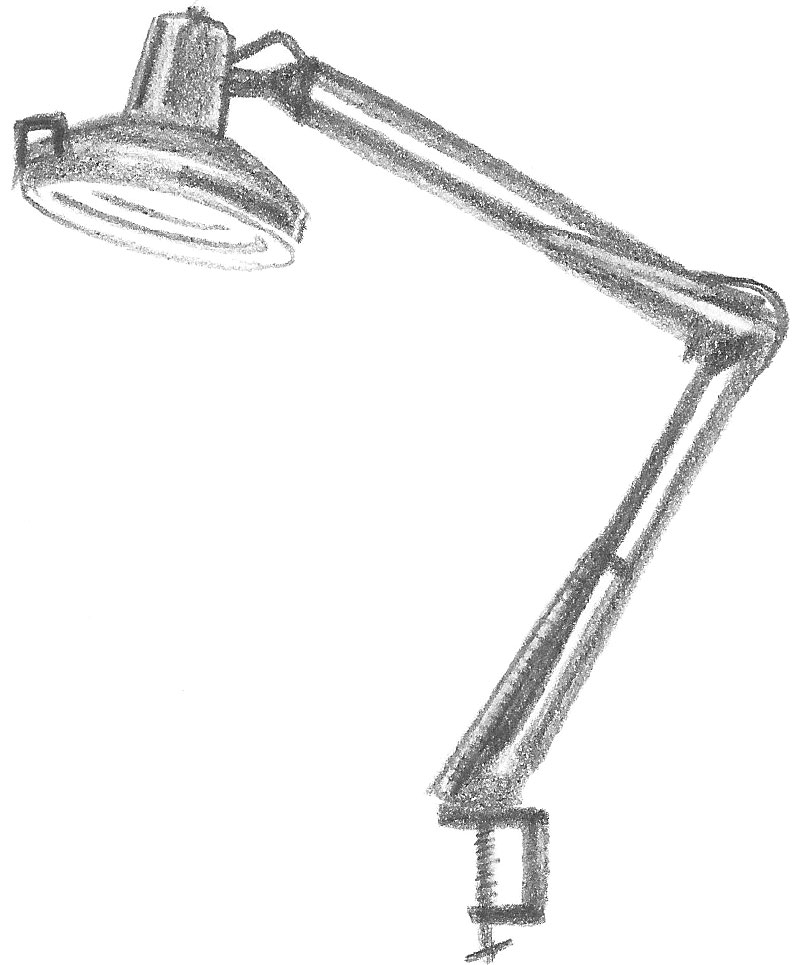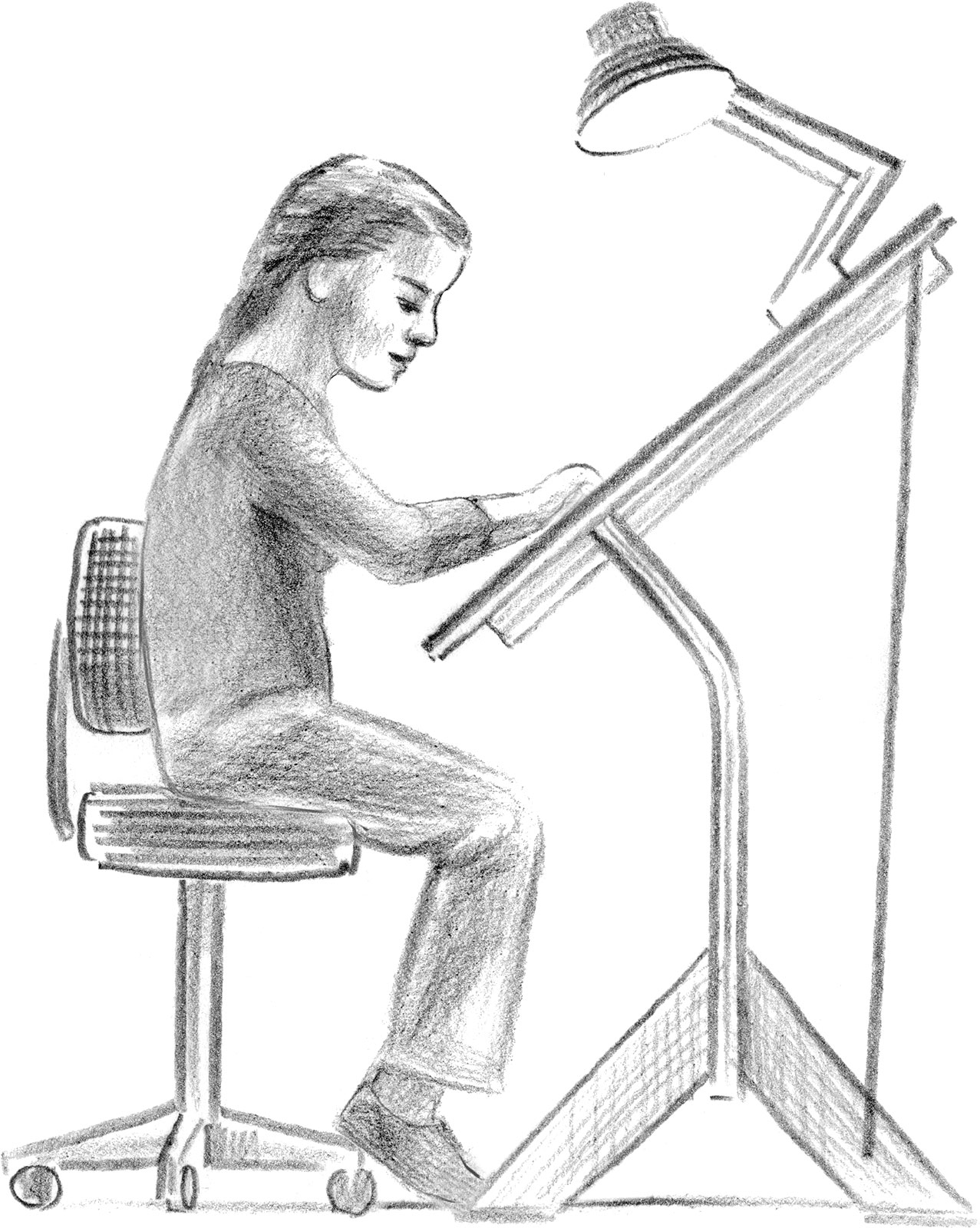
setting up your drawing area
You might be surprised to know that even things like lighting and where you sit influence the quality of your lines and shading, so if you can, think about where you’ll draw. The following are suggestions to make drawing easier, but you might want to set up differently when you find the way that works best for you.

Sit at a table space that’s wide enough to lay this book open with your drawing beside it—about 40 inches (1m) wide. Try your kitchen or dining room table. You’ll also need a chair that’s the right size for you so your feet rest flat on the floor and you can easily reach your drawing paper.

Be sure your lighting—whether it comes from a window, lamp, or light fixture—is angled so it doesn’t reflect off your paper and make your work hard to see. You might have to pick another seat, turn your table, or get a different lamp to get it right. You can clamp a drafting lamp onto your table, for example, and adjust it to reduce glare.
It’s helpful to have enough light as you draw to clearly see the lines and tones without straining your eyes, so sit where you have bright enough light. A ceiling light fitted with two 60-watt bulbs or 23-watt compact fluorescent bulbs works well. If you attach a drafting lamp on the edge of your table, position it opposite your drawing hand so it doesn’t cast shadows across your drawing. Also, position it above your head so it doesn’t shine into your eyes while you draw.



Angle your drawing paper toward your eyes about 30 degrees to avoid distorted shapes in your drawing that can happen when your paper is angled away from your eyes. To view your paper more directly, use an adjustable drafting table if you have one, or tape your paper to a smooth board leaning against a table and resting in your lap. You also can angle the board against a stack of books on top of a table. Fasten the bottom edge of the board to the table with masking tape to keep it from slipping.
A thicker home office printer paper (like 24-pound bond) is a good, basic drawing surface. It has a little texture (called tooth) for shading smoothly and takes erasing fairly well. Be sure you tape it down to avoid bending it. Bristol paper is thicker (100-pound), sold in art and craft stores, and is made in two surfaces: smooth and vellum. I recommend vellum for its great texture when you’re shading light or really dark areas. When you erase, Bristol paper is less likely to bend or tear.
Fun Fact
When you buy printer paper for drawing, you might notice 24#(90g/m2) printed on the package in small print. The # symbol stands for pound weight and indicates that 500 sheets of this paper, called a ream, weighs 24 pounds. At the paper mill, the paper is first cut into 17 by 22–inch sheets before it’s cut into standard 8½ by 11–inch sheets.